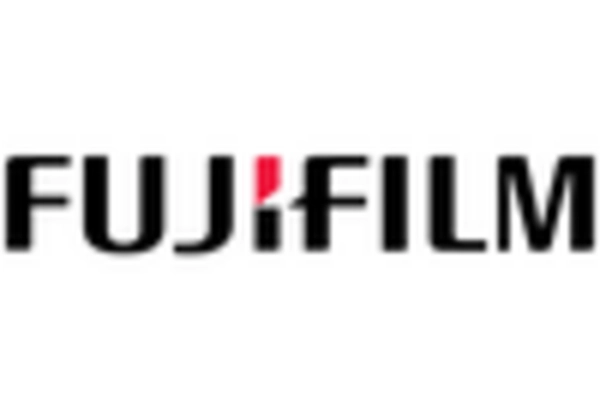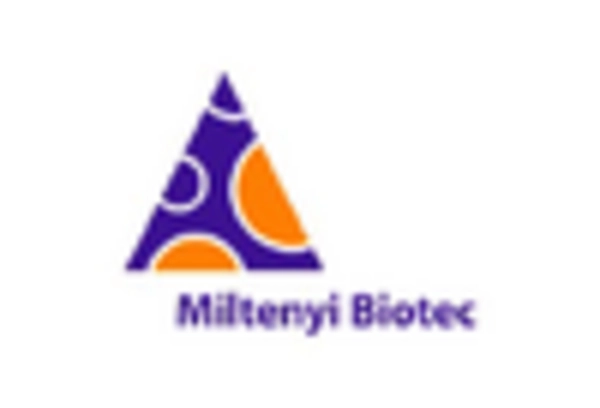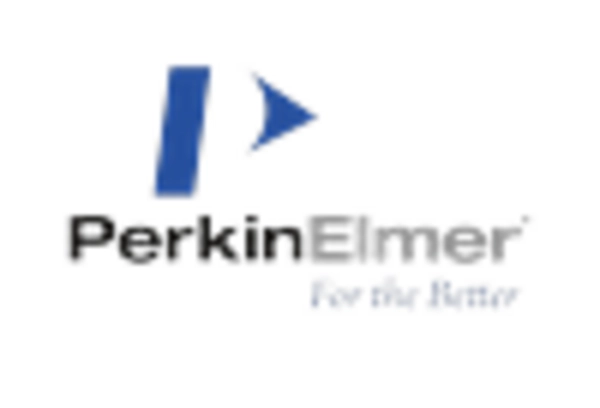Expansion of Research Funding
In the United States, the preclinical imaging market is benefiting from an expansion in research funding. Government agencies and private organizations are increasingly investing in biomedical research, which includes preclinical studies that utilize advanced imaging technologies. For instance, the National Institutes of Health (NIH) has allocated substantial grants to projects that incorporate imaging techniques to enhance drug discovery and development. This influx of funding is likely to stimulate innovation and adoption of new imaging technologies, thereby propelling the growth of the preclinical imaging market. As funding continues to rise, it is expected that the market will see an influx of new players and technologies.
Technological Integration and Innovation
The preclinical imaging market is characterized by ongoing technological integration and innovation. Advances in imaging technologies, such as the development of hybrid imaging systems that combine modalities like PET/CT and MRI, are enhancing the capabilities of researchers. These innovations allow for more comprehensive data collection and analysis, which is crucial for preclinical studies. The integration of artificial intelligence and machine learning into imaging analysis is also emerging, potentially improving the accuracy and efficiency of data interpretation. As these technologies continue to evolve, they are likely to drive the growth of the preclinical imaging market, offering researchers new tools to advance their studies.
Growing Applications in Oncology Research
The preclinical imaging market is witnessing a surge in applications within oncology research. As cancer remains a leading cause of mortality, there is an urgent need for effective diagnostic and therapeutic strategies. Imaging technologies such as bioluminescence and fluorescence are being increasingly utilized to monitor tumor growth and response to treatment in preclinical models. This trend is supported by the increasing number of oncology-focused research initiatives, which are projected to drive the market's growth. The oncology segment is expected to account for a significant share of the preclinical imaging market, reflecting the critical role of imaging in advancing cancer research.
Rising Demand for Non-Invasive Techniques
The preclinical imaging market is experiencing a notable increase in demand for non-invasive imaging techniques. Researchers and pharmaceutical companies are increasingly prioritizing methods that minimize harm to animal subjects while providing accurate data. This shift is driven by ethical considerations and regulatory pressures, as well as the need for reliable data in drug development. The market for non-invasive imaging modalities, such as MRI and PET, is projected to grow significantly, with estimates suggesting a CAGR of around 8% over the next few years. This trend indicates a robust future for the preclinical imaging market, as it aligns with the broader movement towards humane research practices.
Increased Collaboration Between Academia and Industry
The preclinical imaging market is benefiting from increased collaboration between academic institutions and industry players. Partnerships are forming to leverage academic research capabilities alongside industry resources, facilitating the development of innovative imaging solutions. These collaborations often result in the sharing of knowledge, technology, and funding, which can accelerate the pace of research and development. As more academic institutions engage with industry partners, the preclinical imaging market is expected to expand, fostering an environment conducive to innovation and the introduction of new imaging modalities.

















Leave a Comment